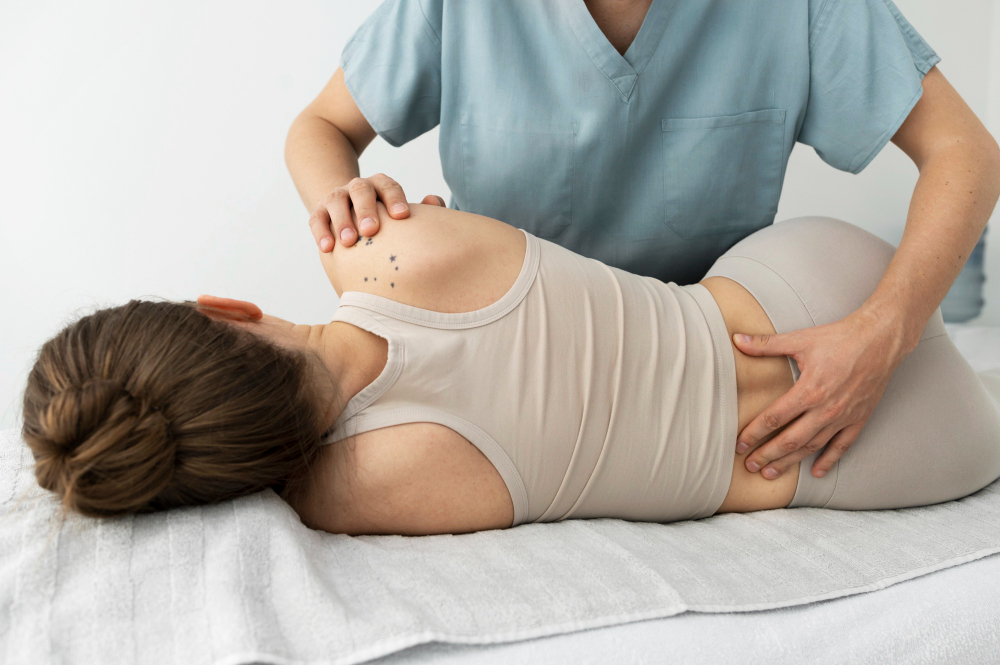It is a common ailment that millions of people experience globally: back ache. Injuries, sedentary lifestyles, bad posture, and underlying medical issues are just a few of the causes. While conventional treatments such as medications, physical therapy, and surgery can offer relief, they often come with side effects or don’t address the root causes of the pain. With an emphasis on detoxification, cleansing, and the restoration of bodily equilibrium, panchakarma provides a comprehensive and all-natural method of treating back pain.
Understanding Panchakarma in Ayurveda
The Sanskrit word panchakarma means “five actions” or “five treatments.” The five therapeutic actions aim to facilitate healing and overall well-being by aiding in the body’s natural balance restoration and detoxification. Ayurveda posits that bodily, mental, and spiritual harmony is the state of health; any perturbation to this equilibrium results in illness or discomfort. The way that panchakarma functions is by clearing the body of toxins and restoring equilibrium to the three doshas (Vata, Pitta, and Kapha), the basic energies that control our physical and mental health.
According to Ayurveda, backpain is an imbalance in the Vata dosha, which governs the movement and the nervous system. An exacerbated Vata can result in problems such as back ache, stiff muscles, and joint pain. Panchakarma treatments, when personalized to the individual’s dosha imbalance, can significantly alleviate back pain by addressing its root cause.
Key Panchakarma Treatments for Back Pain
For treating back pain, specific Panchakarma therapies are recommended based on the individual’s condition, body type, and the severity of the pain. Below are some of the primary Panchakarma therapies that play a crucial role in managing and healing back pain.
-
Abhyanga (Herbal Oil Massage)
One of the first treatments used in Panchakarma for back pain is Abhyanga, a warm herbal oil massage. It is administered with therapeutic oils that are especially selected according to the dosha of the patient. Abhyanga’s soft, rhythmic strokes aid in promoting relaxation, increasing blood flow, and relieving tense muscles. This therapy not only eases the symptoms of back pain but also nourishes the tissues and strengthens the spine.
The oils used in Abhyanga often contain herbs like Ashwagandha, Bala, and Mahanarayan oil, known for their anti-inflammatory and pain-relieving properties. The oil penetrates deep into the muscles, reducing stiffness and alleviating chronic pain caused by Vata imbalance.
-
Kati Basti (Medicated Oil Treatment for the Lower Back)
For localized back pain, particularly in the lumbar region, Kati Basti is highly effective. This therapy involves placing a dough well on the lower back and filling it with heated, medicinal oil. The oil is held in this location for a predetermined amount of time, which enables it to thoroughly enter the back’s muscles and tissues.
Kati Basti is especially useful for conditions like sciatica, herniated discs, and lower back stiffness. The warmth of the oil helps to soothe the nerves and reduce inflammation, providing immediate pain relief and promoting long-term healing.
-
Basti (Medicated Enema Therapy)
Basti is a core Panchakarma treatment that involves administering medicated oils or herbal decoctions via an enema. While it might seem unrelated to back pain, Basti is one of the most effective therapies for balancing Vata dosha, which, as mentioned earlier, is often the underlying cause of back pain.
Vata aggravation is lessened by basti’s assistance in clearing the intestines of toxins. By calming Vata, it alleviates nerve compression, muscle spasms, and joint discomfort, making it particularly beneficial for chronic lower back pain and conditions like arthritis or sciatica.
-
Pizhichil (Oil Bath Therapy)
Pizhichil, also known as the “royal oil bath,” is a luxurious and highly therapeutic treatment for those suffering from severe or chronic back pain. During this therapy, the patient is gently massaged as warm, medicinal oil is repeatedly poured over their body. The combination of the heat from the oil and the gentle pressure from the massage works to relieve muscle tension, reduce inflammation, and promote relaxation.
Pizhichil is especially recommended for those experiencing muscle degeneration or nerve-related pain. The warmth and medicinal properties of the oil deeply nourish the tissues, promoting the healing of damaged muscles and joints.
-
Swedana (Herbal Steam Therapy)
To help the body release toxins, Swedana, or herbal steam therapy, is frequently used after an oil massage such as Abhyanga or Pizhichil. Swedana enhances the effects of the oils used in the massage by further softening the muscles and tissues, which helps to alleviate stiffness and improve mobility.
The steam is infused with herbs that have anti-inflammatory and analgesic properties, providing additional relief from back pain. This therapy is particularly beneficial for people who experience stiffness in the spine or upper back.
The Benefits of Panchakarma for Back Pain
Unlike conventional treatments that often focus on symptomatic relief, Panchakarma addresses the root causes of back pain, offering a holistic solution that benefits the entire body.
- Detoxification: Panchakarma helps to remove deep-seated toxins (ama) from the body, which are often responsible for inflammation and pain.
- Strengthening the spine: Through massages, herbal treatments, and oil therapies, Panchakarma strengthens the spine and nourishes the surrounding muscles and tissues.
- Emotional and mental balance: Ayurveda recognizes that pain isn’t just physical but can also be influenced by emotional and mental imbalances. Panchakarma’s holistic approach restores balance at every level, offering emotional and psychological relief.
Conclusion
Panchakarma offers a comprehensive and natural approach to treating back pain by addressing its root causes. Through therapies like Abhyanga, Kati Basti, and Basti, this ancient Ayurvedic practice provides long-lasting relief while promoting overall health and well-being. Whether you’re suffering from chronic back pain or an acute injury, Panchakarma could be the key to unlocking a pain-free life. By focusing on detoxification, balance, and rejuvenation, it helps the body heal from within, offering sustainable results without the side effects of modern treatments.

